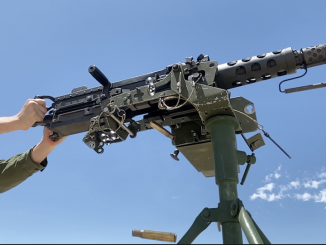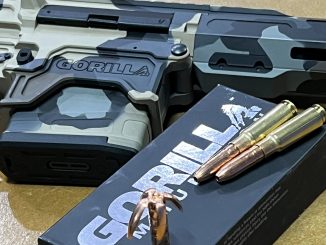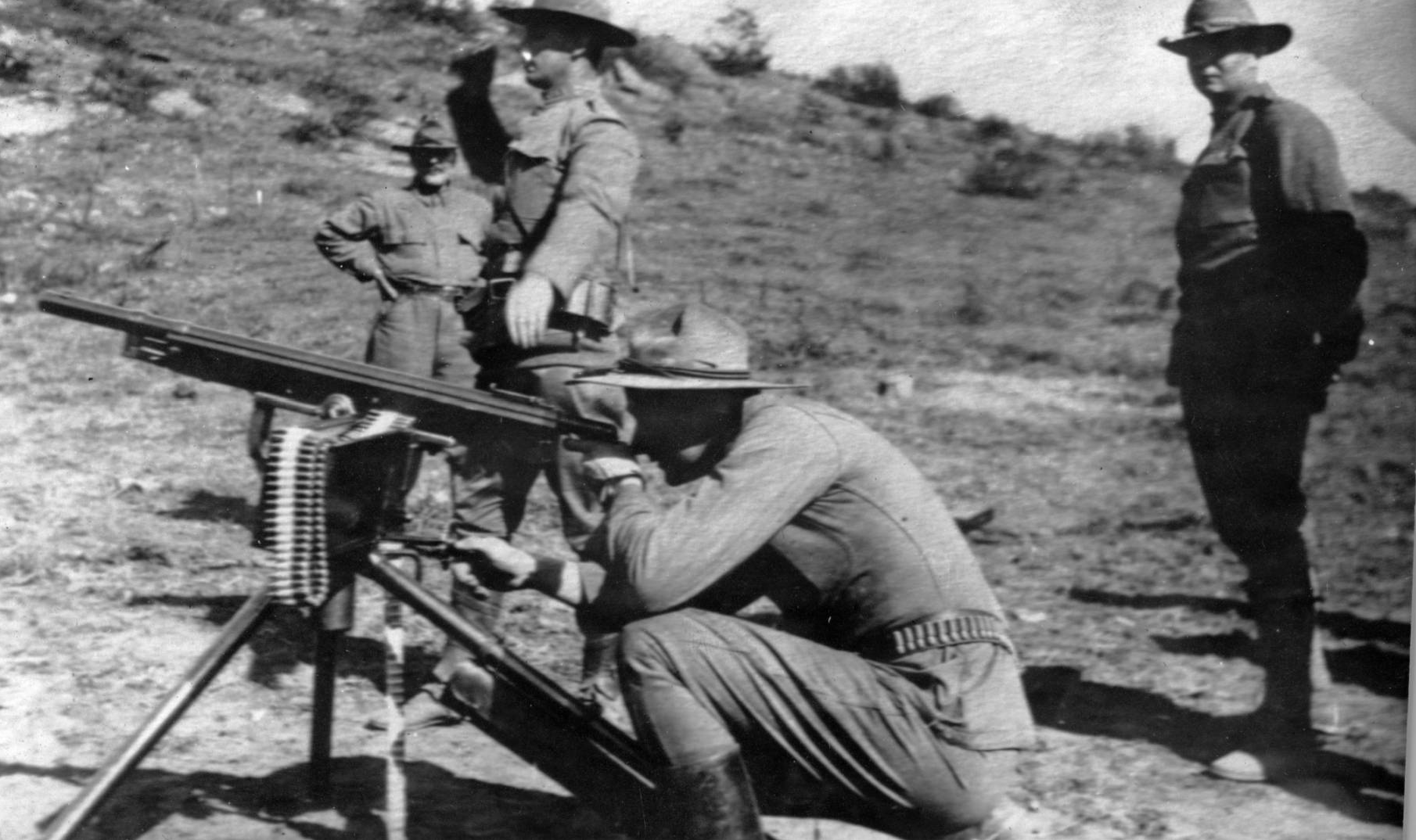In 1867, a Russian delegation came to the United States to source new small arms for the Czar. In addition to purchasing Gatling guns, they met with Hiram Berdan and agreed to purchase a trapdoor single shot rifle he had designed. Berdan had been very active in the years immediately after the Civil War trying to sell breechloading conversions to any interested party, from New York to Egypt. The design that the Russians agreed on was a purpose-built single shot rifle instead of a conversion, chambered for the slightly bottlenecked .42 Berdan cartridge and using an in-line striker instead of the side hammer more common to trapdoor conversions.
Colt would produce 30,000 of these Model 1868 Berdan rifles for export to Russia, with the first example ready in December 1868 and bulk deliveries running from March 1869 until May 1870. Berdan himself immediately set about improving his design, and sold the result to the same Russian delegation in 1870.This was a single shot turnabout action, commonly referred to as the Berdan II.




Seems to me that 30,00 would have armed a small fraction of the Imperial Russian Army. Anybody know how they were issued?
Ian – when I find a decent Berdan 2 I’ll do a video on it.
Also Ian – here is a Berdan 2: https://www.youtube.com/watch?v=ijpd3CgvwOc
that’s funny. you may forgive the man for not remembering all of his video’s. he made a few….
It wasn’t “Russia’s First Military Cartridge Rifle”.
Before her were the Albini and Krnka conversion rifles in 1869.
Or I misunderstood something…
Good video! That rifle is in fantastic condition, and will probably sell in the 5-digit range…btw, it is listed on the auction as being in “rare .45 caliber” instead of the cyrillic marked Russian issue weapons in 10.66x57r. So, what is the caliber?
Fwiw, the Berdan II, 4.2 linya vintovka Berdana obr.1870g, was produced at Birmingham Small Arms, and later at all three Russian Arsenals, not just Izhevsk and Tula. About 3 million were produced, so many many more than the BI.
“(…)“rare .45 caliber”(…)”
According to Эволюция стрелкового оружия by В. Г. Фёдоров
available at http://ww1.milua.org/biblio.htm
During development of Berdan I in U.S., 4,5-line caliber cartridge was used, relatively late in this process it was judged smaller caliber is required to lessen weight of cartridge. This result in 4,2-line caliber and also improved accuracy and give flatter trajectory. Gorlov reported that no other European or American [military] rifle match it in accuracy. It was tested against various mistreatment including:
– using acid to rust striker in order to block it, despite that cartridge were fired
– barrel stuffing with stones, resulted in barrel destruction, but action survived
Thus in year 1868 ordered were: 30000 examples of that rifle and 7500000 examples of cartridges.
Blah blah on duty, about how “Gorlov and Gunnius invented the cartridge for the American rifle”. LOL
You don’t even need to search for a long time.
http://old.municion.org/Sharps/40-70Sharps.htm
http://old.municion.org/Sharps/40-90SharpsNecked.htm
And no one “reduced the caliber to reduce the mass of the bullet.”
In Russia, at first, they did not want to use hard lead alloy. Thus, the original cartridge of Berdan turned out to be completely unusable, since it caused strong lead in the barrel.
The Berdan №1 rifle was official adopted in 1869 (not 68), two months (January) earlier than Krnka (March).
And in the same 1869, it became clear that such a rifle was not needed, since bolts appeared.
Since the order for the production of a pilot batch had already been paid for and the rifles were manufactured, nothing was canceled.
But from the next order for 60,000 rifles, only about 7,000 were paid for and delivered.
The rest, including the rifles rejected by acceptance, were left in the United States.
The resulting rifles were intended to be adopted as a sharpshoter, complementing the Krnka rifle (produced more than 800,000), which was the main infantry rifle. But they did not leave any noticeable trace, unlike Berdan No.2.
Sorry, confused links.
Sharps cartridges were developed together with the new Berdan cartridge.
It is based on the Peabody cartridge.
http://old.municion.org/11_4x49/11_4x49.htm
There are also similar ones.
I never claimed Gorlov and Gunnius invented the cartridge for the American rifle, but only that 4,5-line cartridge was used during developments.
I never claimed reduced the caliber to reduce the mass of the bullet. but that they reduced to make weight of whole cartridge smaller.
Blah blah on duty
For this I might only inform that I pointed book which I used and I do not care unless you are able to point source on which you based your claims.
Personally, no one accuses You of anything.
Unless, in the habitual (completely unreasonable) gullibility of the material, just because it is in Your native language. 😉
This is what most Russian sources write.
for example
https://amp.ru.autograndad.com/7749029/1/4-2-lineynyy-vintovochnyy-patron.html
Text only.
Draw Your own conclusions.
https://patentimages.storage.googleapis.com/6a/bd/b7/e1a2e61807fcc1/US82587-drawings-page-1.png
https://www.gunboards.com/threads/the-berdan-ii-first-models.52114/page-3
https://aussiemetaldetecting.com/union-metallic-cartridge-company/
https://www.oldammo.com/4477sharps.jpg
http://old.municion.org/44/44-77Sharps.htm
http://old.municion.org/Sharps/40-50Sharps.htm
IMHO I don’t believe that a couple of such geniuses came who, during their voyage, just between eating and walking, invented one of the best service cartridges of their time.
Rather, on the contrary, they were offered a “gift” of a new cartridge, in the expectation that the order for the manufacture of these cartridges would be placed in Bridgeport.
“(…)single shot turnabout action(…)”
What is turnabout action? I always though Berdan II is bolt-action from U.S. classification point of view.
He was trying to say “turn-bolt.”
Just to be picky, if a sprung firing pin is actually housed in the front of the breech-block, then isn’t that “striker” actually a linear hammer? Doesn’t a striker have to contact the primer to count as a striker?
“(…)slightly bottlenecked .42 Berdan cartridge(…)”
As already mentioned Gorlov was also responsible for getting Gatling guns, these made for Russian Empire were also .42 caliber, however this cartridge was different from cartridge from Berdan rifles: http://old.municion.org/42Berdan/42Gatling.htm
I am unable to say which of those cartridges is earlier.
https://www.litmir.me/br/?b=138518&p=2
S. Fedoseev “Machine guns of the Russian army in battle”
The Gatling cartridge was developed in 1868 (?) And allegedly had a significantly (threefold?!) Increased charge and a lead bullet without a wrapper.
I don’t really understand how this could have been done with brass of almost the same volume as Berdan brass, but let’s leave it on Fedoseev’s conscience.
Gatlings chambered for this cartridge were prone to barrel explosions from lead deposits and overheating, so the cartridge was replaced with a Berdan rifle cartridge.
http://old.municion.org/42Berdan/42Gatling.htm
The volume of Berdan-Gatling brass is one and a half times greater than the infantry Berdan.
Apparently, the threefold increase in power (if any) is due to the use of gunpowder with ammonium nitrate.
The so-called “low-smoke gunpowder”.
Unfortunately this example is incomplete. In the Rodina, we do not issue bayonet scabbards. “Why”, you ask.Because, be it Csar or Commissar, the muzhiks keep their bayonets fixed at all times. You will notice, tovarish, that the AK-47 had a folding bayonet. Some things, like the secret police, never change in Mother Russia.
https://www.calguns.net/calgunforum/showthread.php?t=150117
“За ваше здоровье”
Only Chinese AKs had folding bayonet. Soviet ones never did. In fact initial one did not have bayonet at all.